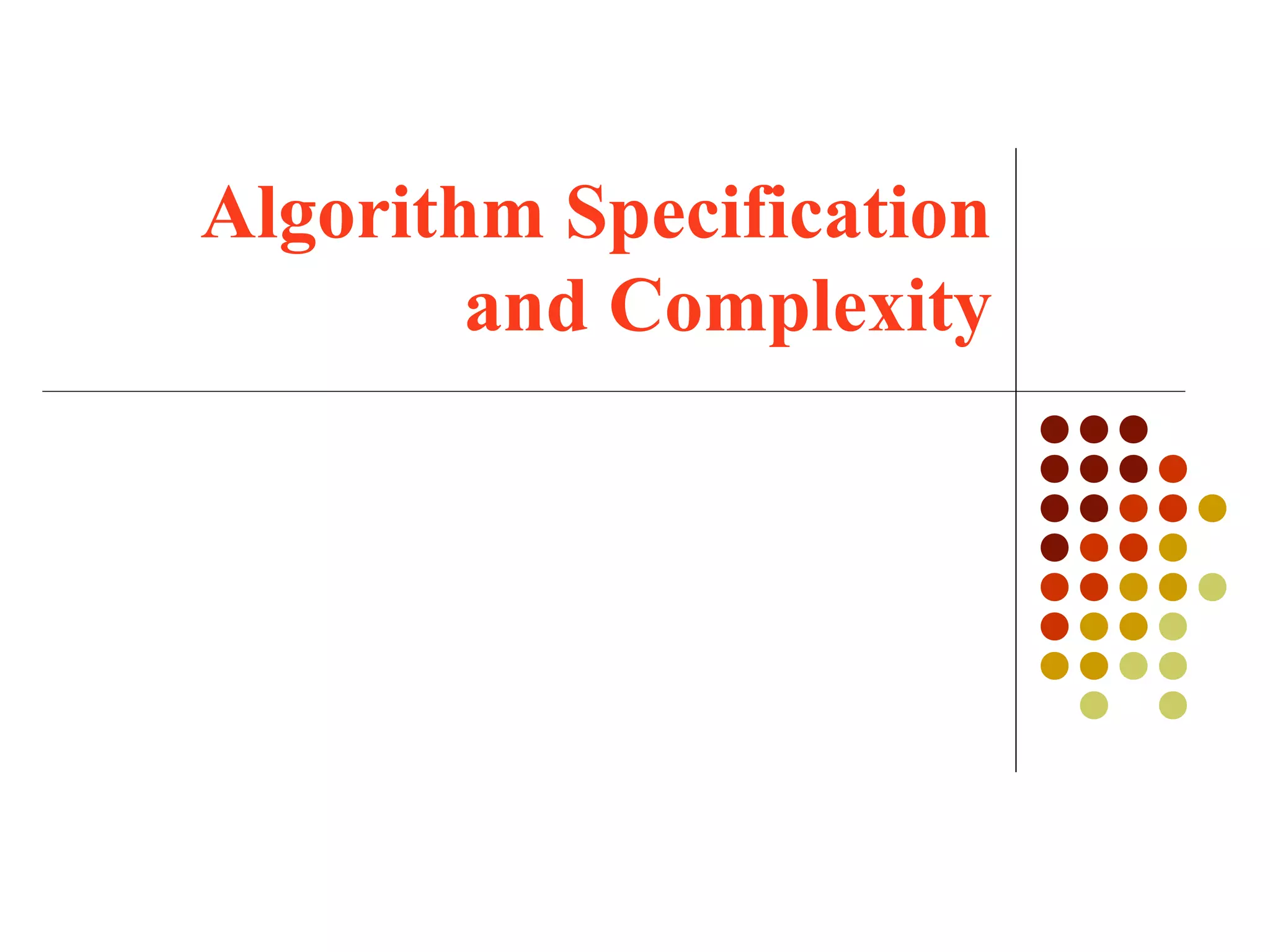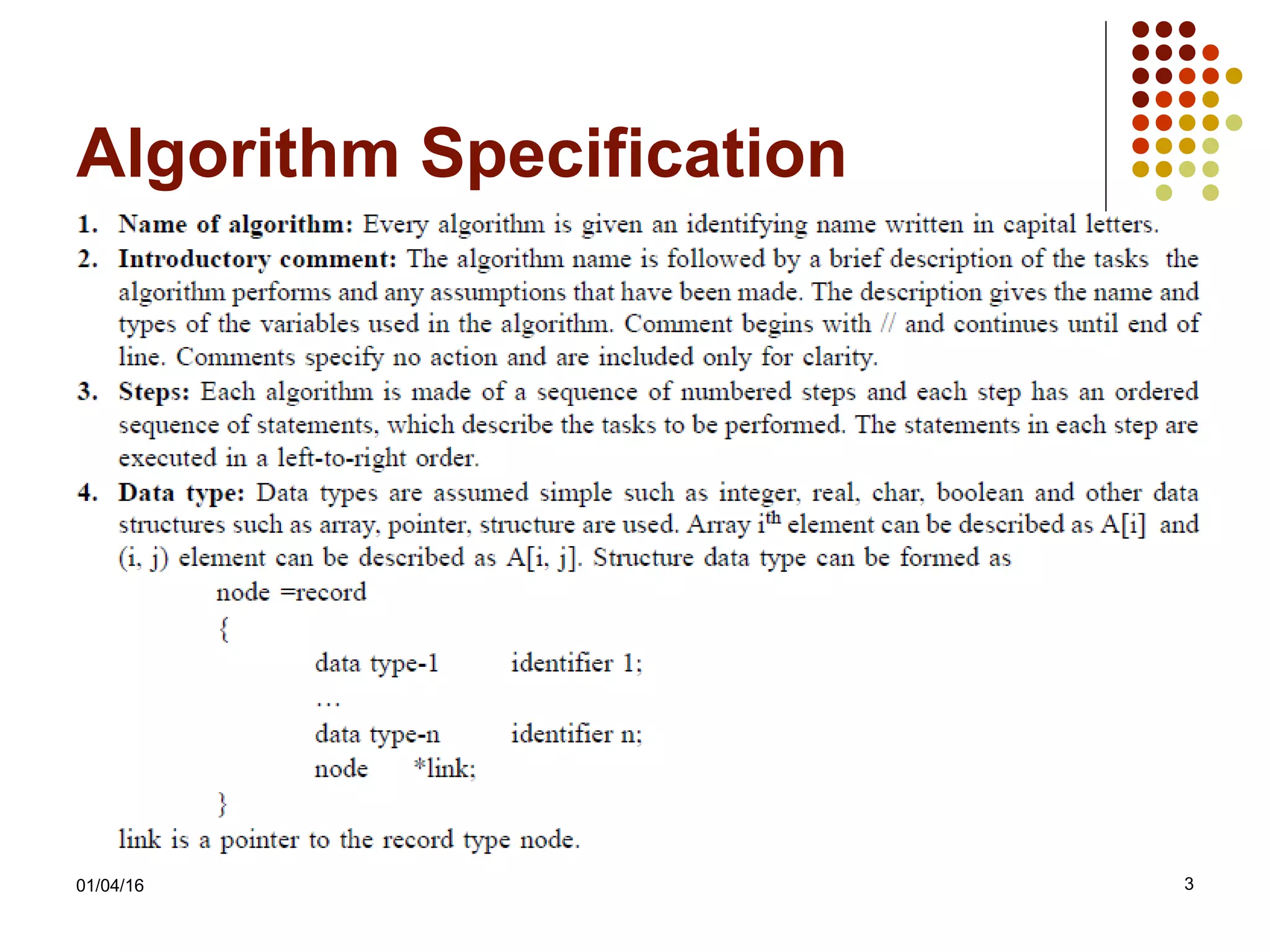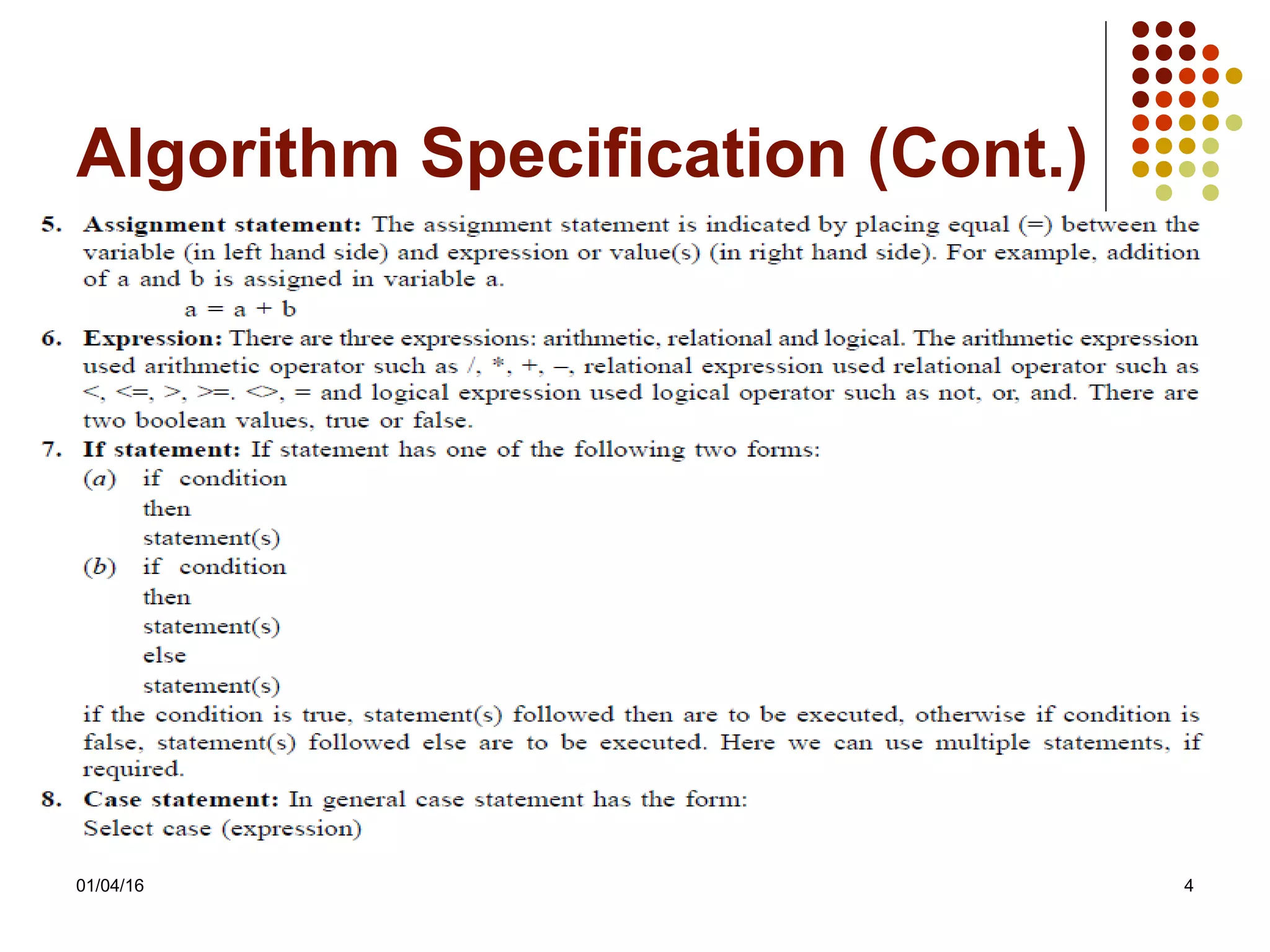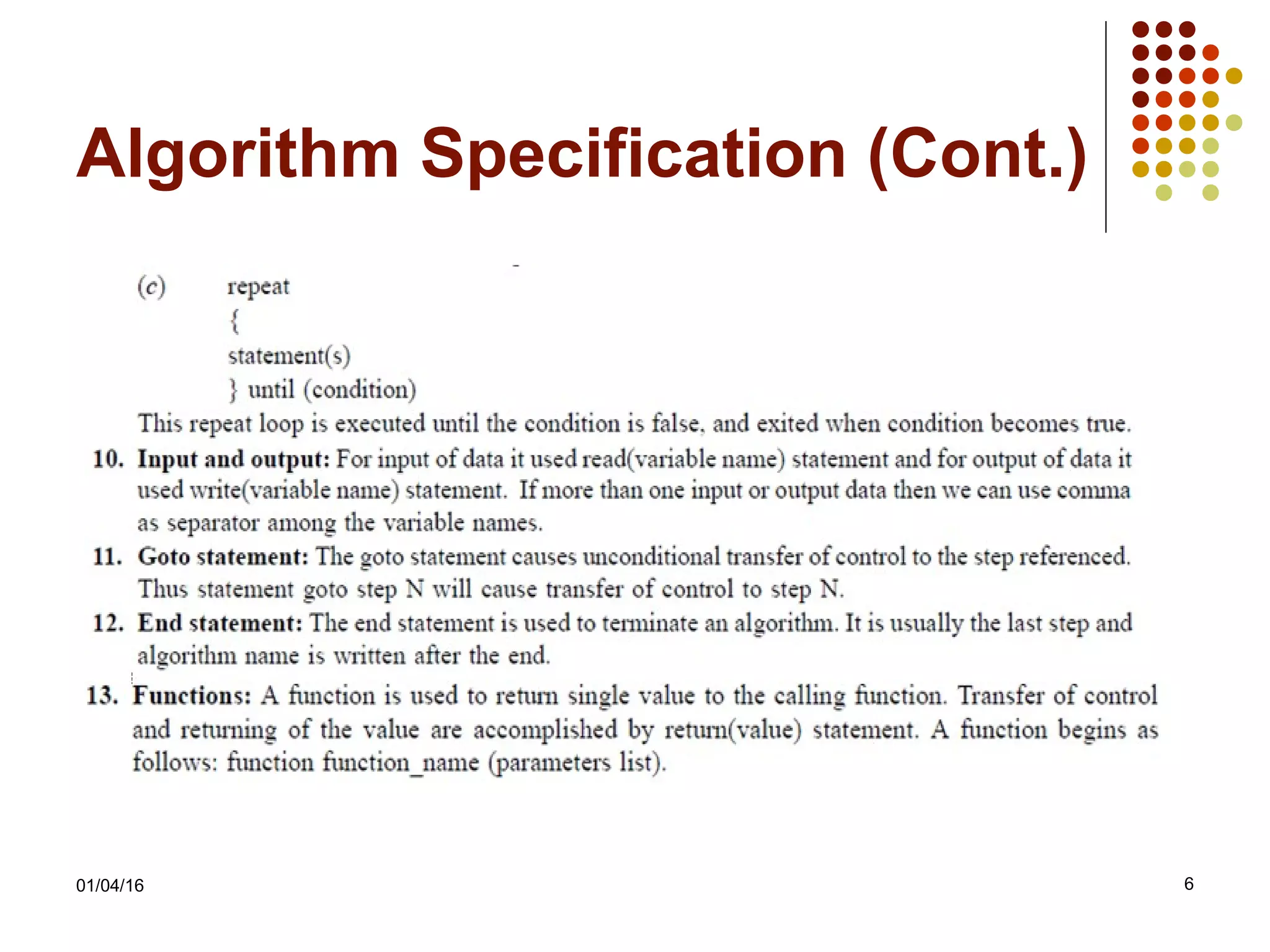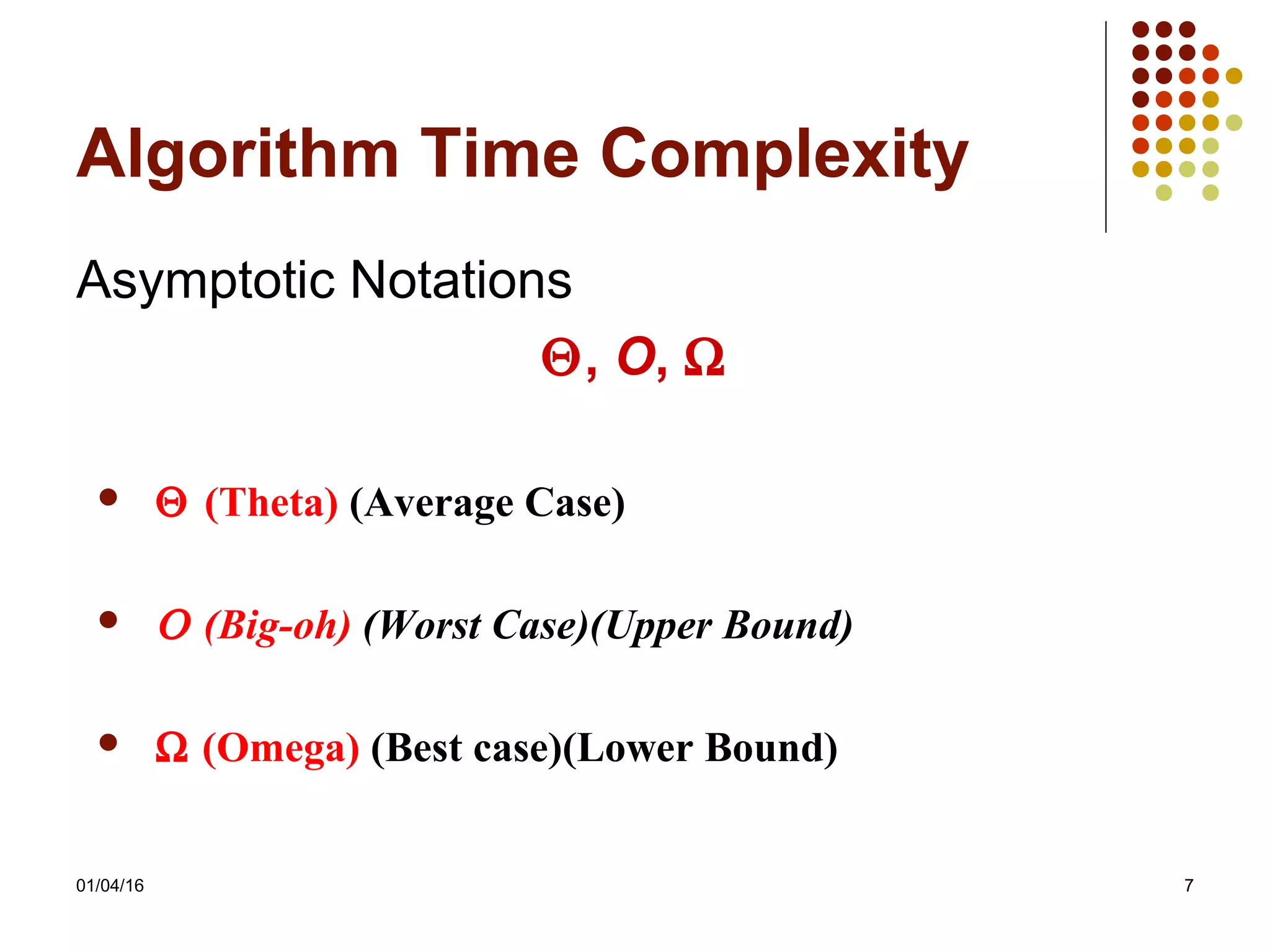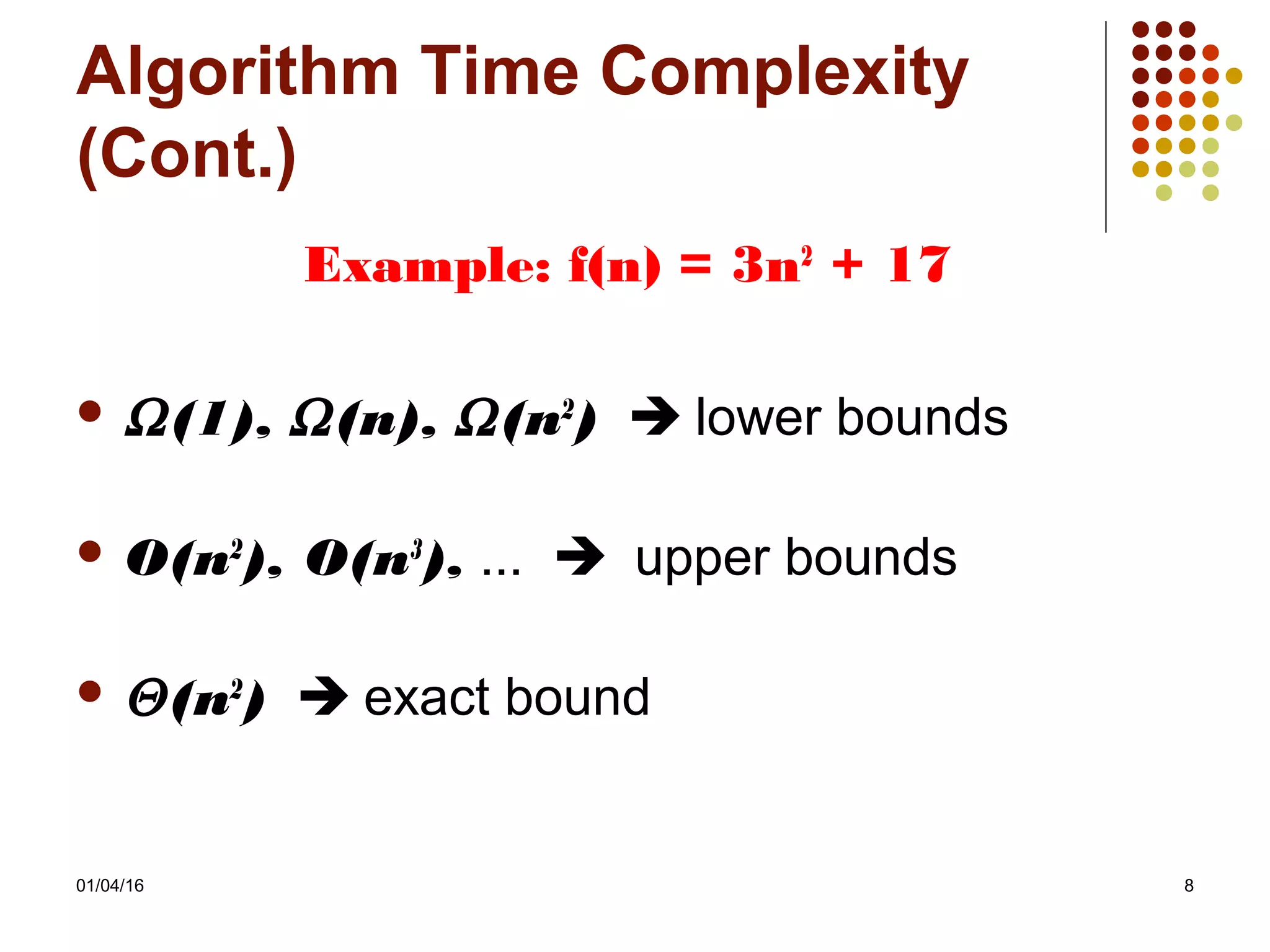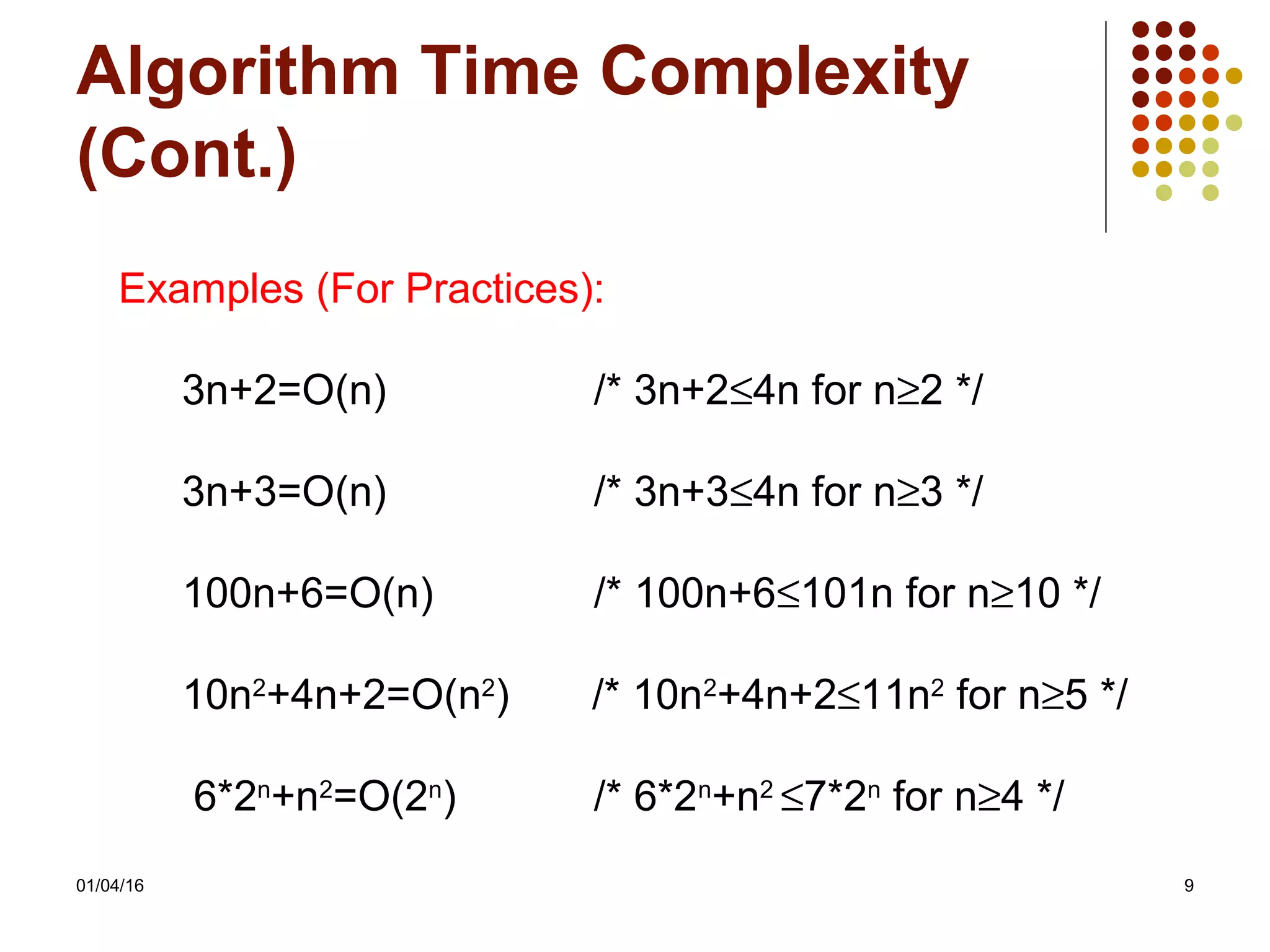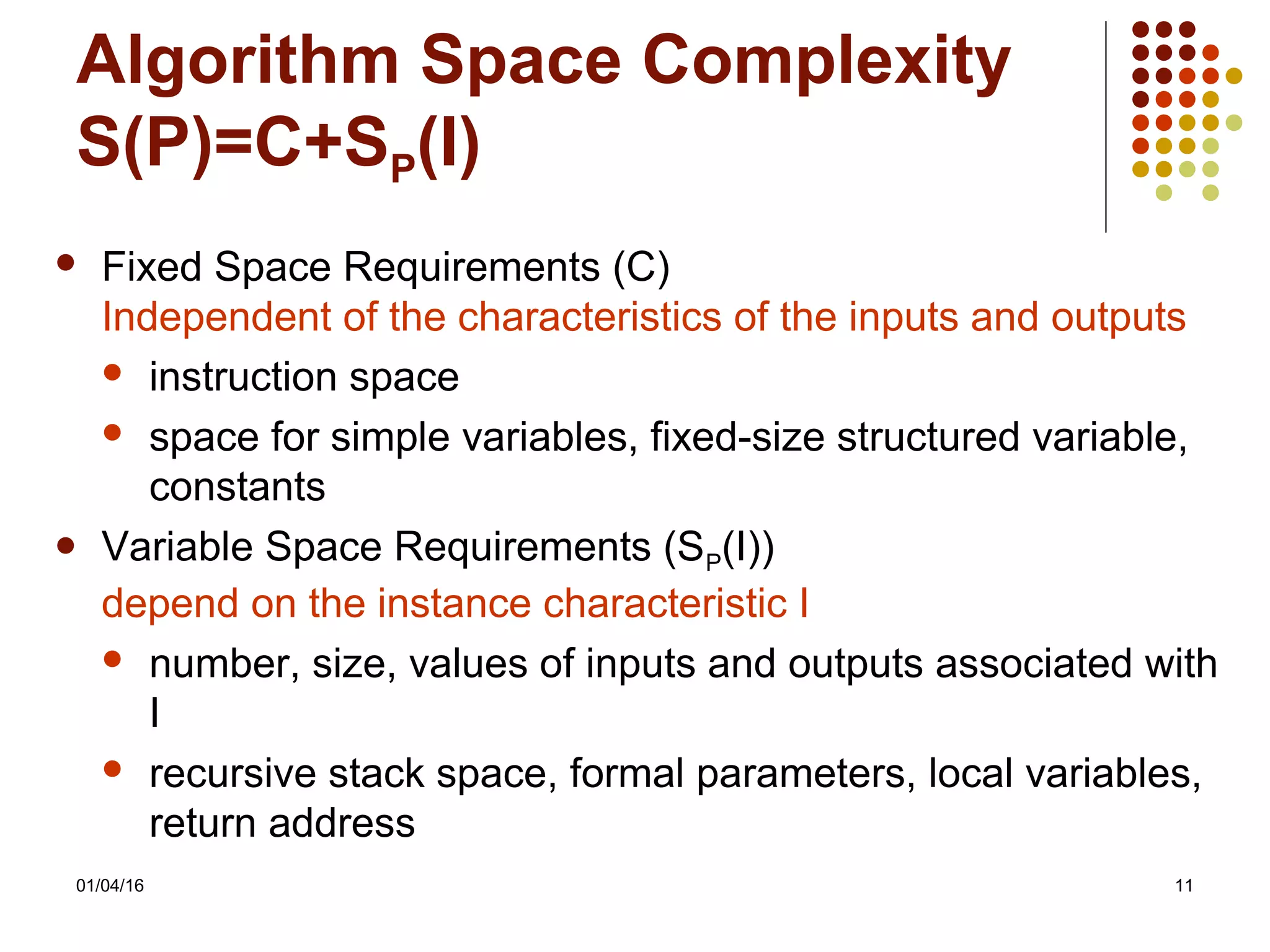This document discusses algorithm specification and complexity. It defines the criteria an algorithm must satisfy and introduces asymptotic notations for analyzing time complexity, including Θ (average case), O (worst case upper bound), and Ω (best case lower bound). Examples are provided to illustrate analyzing algorithms using these notations. The relations between Θ, Ω, and O are explained, stating that Θ represents the exact bound. The document also covers algorithm space complexity, distinguishing between fixed space requirements and variable space requirements dependent on input characteristics.
